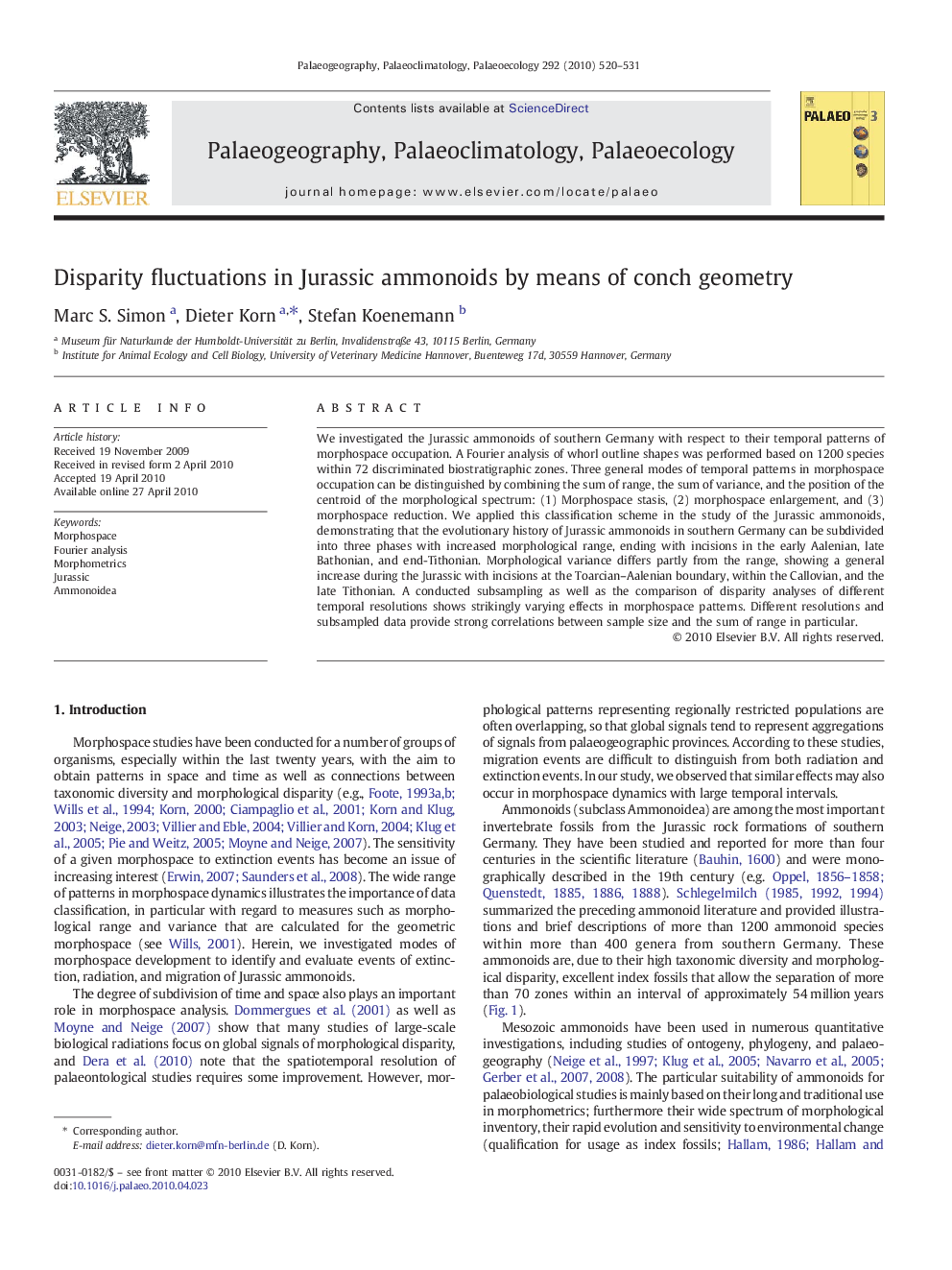| Article ID | Journal | Published Year | Pages | File Type |
|---|---|---|---|---|
| 4467713 | Palaeogeography, Palaeoclimatology, Palaeoecology | 2010 | 12 Pages |
We investigated the Jurassic ammonoids of southern Germany with respect to their temporal patterns of morphospace occupation. A Fourier analysis of whorl outline shapes was performed based on 1200 species within 72 discriminated biostratigraphic zones. Three general modes of temporal patterns in morphospace occupation can be distinguished by combining the sum of range, the sum of variance, and the position of the centroid of the morphological spectrum: (1) Morphospace stasis, (2) morphospace enlargement, and (3) morphospace reduction. We applied this classification scheme in the study of the Jurassic ammonoids, demonstrating that the evolutionary history of Jurassic ammonoids in southern Germany can be subdivided into three phases with increased morphological range, ending with incisions in the early Aalenian, late Bathonian, and end-Tithonian. Morphological variance differs partly from the range, showing a general increase during the Jurassic with incisions at the Toarcian–Aalenian boundary, within the Callovian, and the late Tithonian. A conducted subsampling as well as the comparison of disparity analyses of different temporal resolutions shows strikingly varying effects in morphospace patterns. Different resolutions and subsampled data provide strong correlations between sample size and the sum of range in particular.
